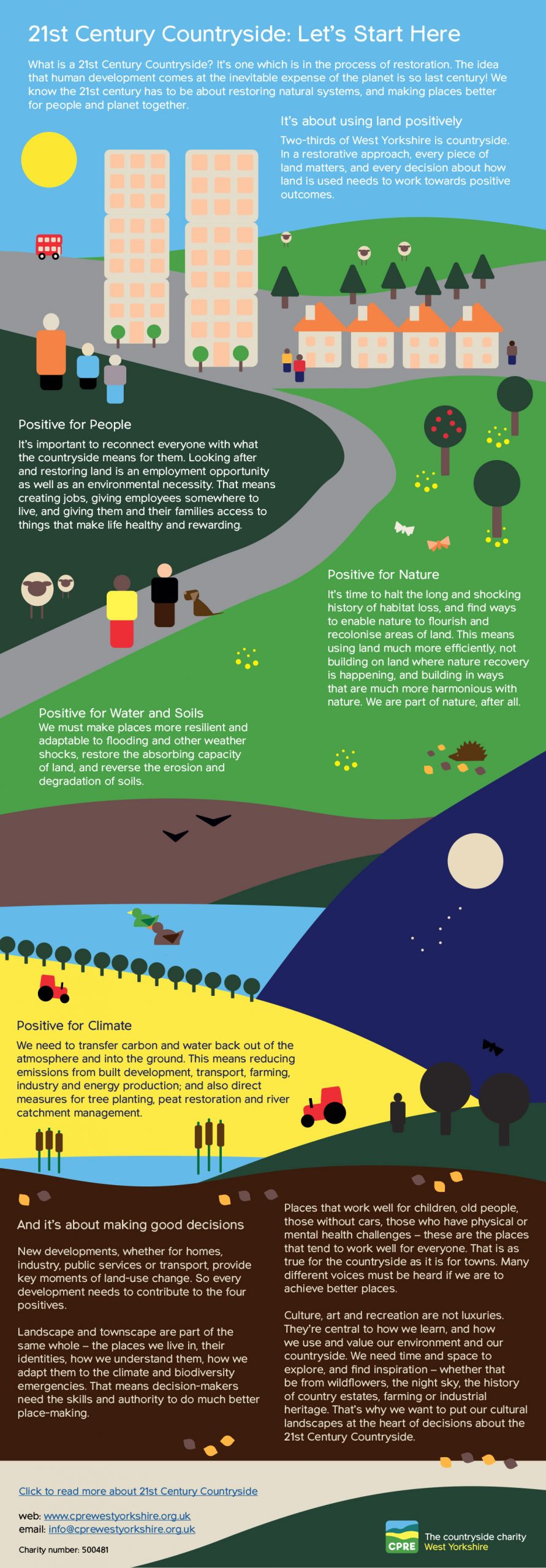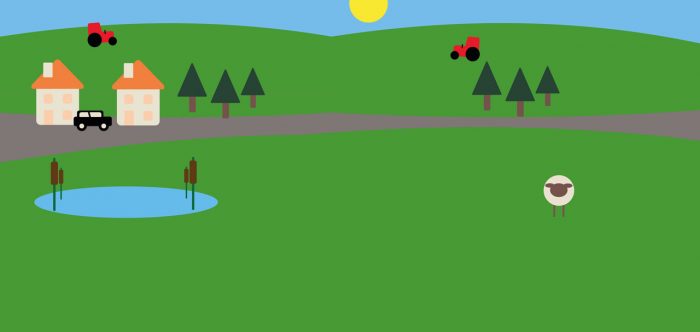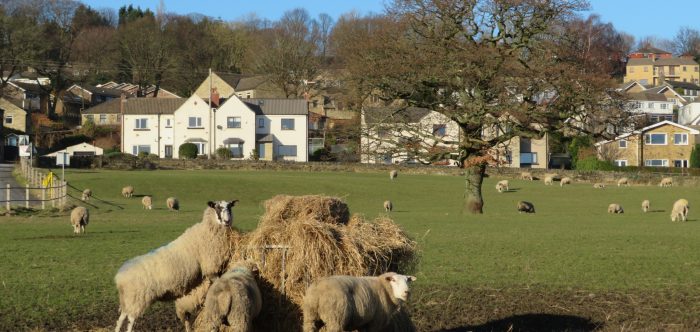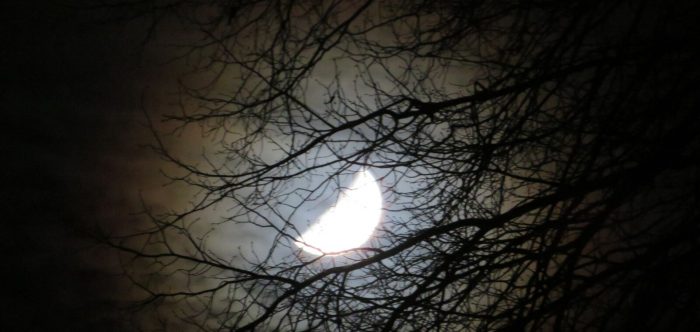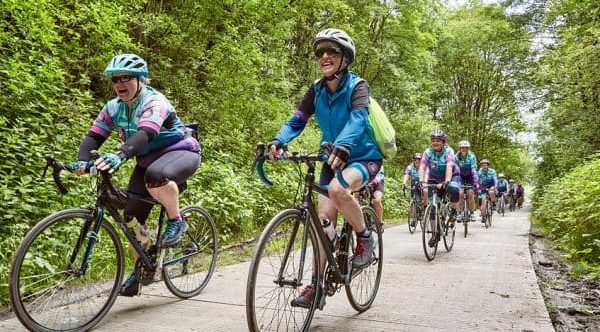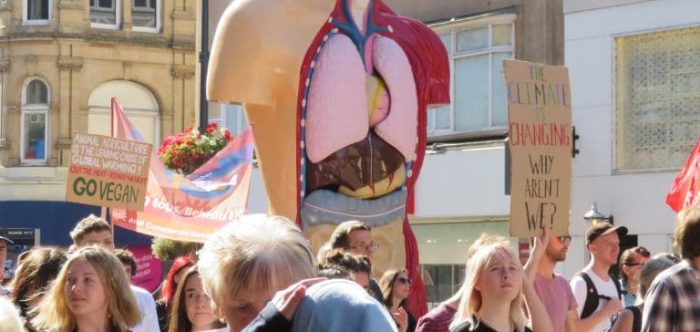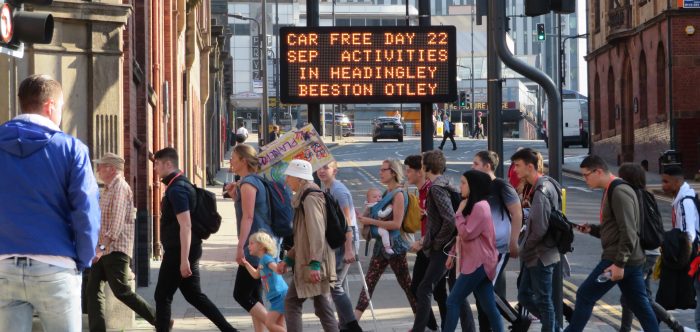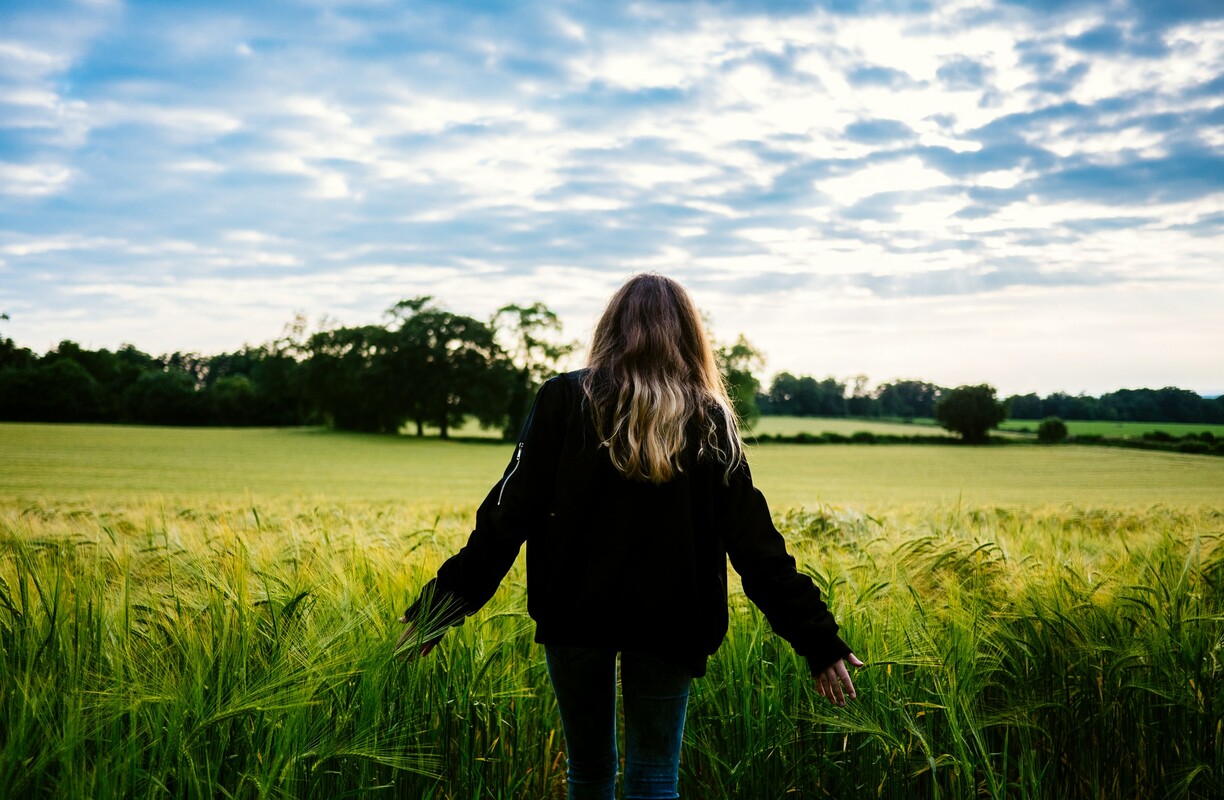A 21st Century Countryside for West Yorkshire
We have been speaking to a whole range of people across West Yorkshire to develop a better understanding about what a 21st Century Countryside for West Yorkshire might look like. From this, we have proposed 7 ‘What If’ Questions which envisage a better future for our area. You can download and read the full document here.
Q: What if every land-use decision was a positive one for the countryside?
21st Century Countryside is CPRE’s initiative to start a conversation about the future of West Yorkshire’s Countryside, and what we can do together to shape it. It centres around the process of restoration. We have to restore natural systems and equitable ways of living. We also need it to be enjoyable and fruitful.
Two thirds of all land in West Yorkshire is in the countryside – from the wild moorlands to the country house estates and ex-industrial wetlands, to the arable and livestock farmland. We need to use land positively.
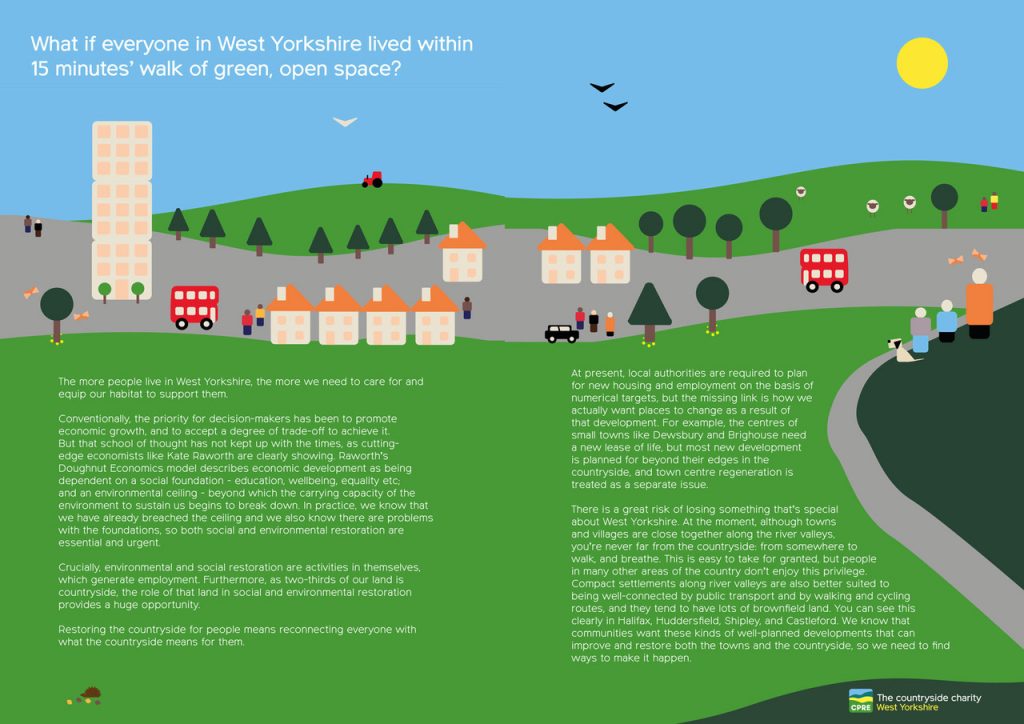
Q: What if everyone in West Yorkshire lived within 15 minutes’ walk of green, open space?
Economist Kate Raworth, in her book Doughnut Economics, describes an economic model as being dependent on a social foundation (education, wellbeing, equality etc.) and an environmental ceiling – beyond which the ability of our environment to sustain us begins to fail. We are already well past that point, so a process of social and environmental restoration is urgently needed. To do this, we need well-planned developments which can improve both our urban and rural environments.
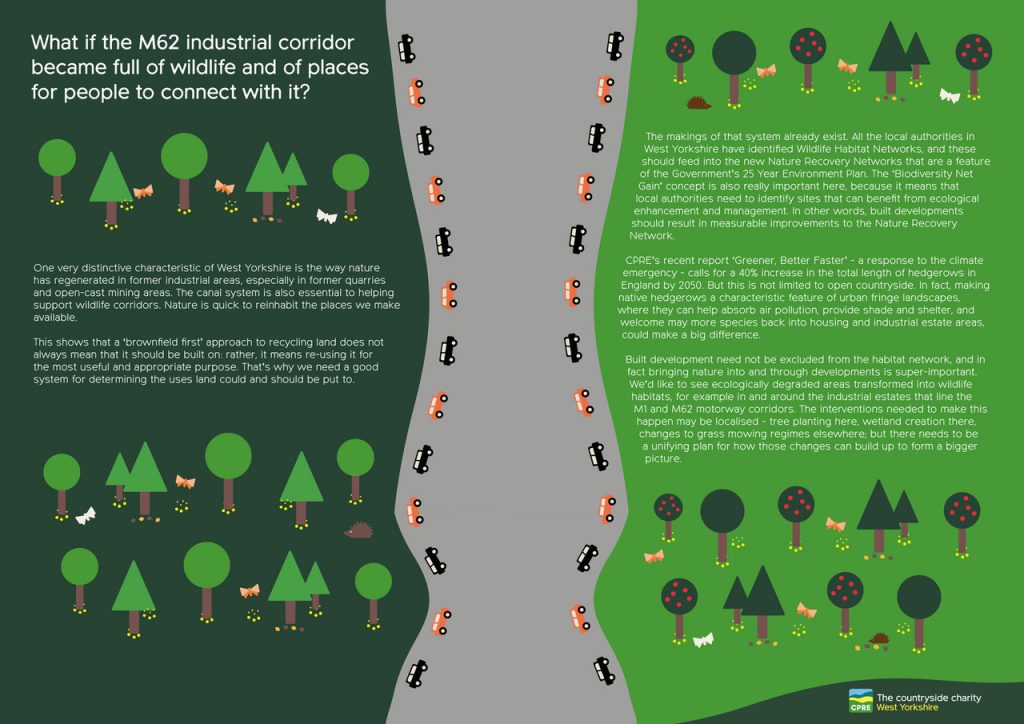
Q: What if the M62 industrial corridor became full of wildlife and of places for people to connect with it?
Nature is quick to regenerate when given the chance. We can see this in the former quarry and open cast mining areas of West Yorkshire. We would like to see the best use being made of available land. Recycling land does not always mean it should be built on – we need to think about land use in terms of it’s most useful and appropriate purpose. We would like to see ecologically degraded areas such as the industrial estates that line the M1 and M62 motorway corridors, transformed into wildlife habitats. The interventions needed to make this happen may be localised (tree planting, wetland creation, changes to mowing regimes) – but planned to create a big picture.
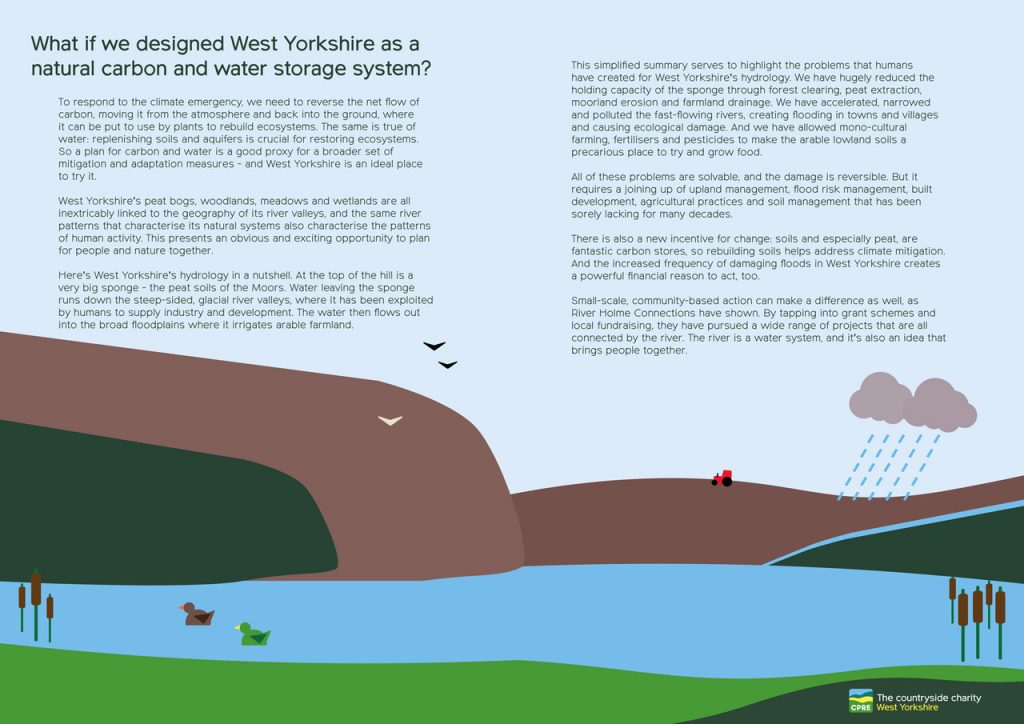
Q: What if we designed West Yorkshire as a natural carbon and water storage system?
We need to reverse the net flow of carbon, moving it from the atmosphere back into the ground. The same is true for water. West Yorkshire’s hydrology (in a nutshell) is this: The peat soils of the moorlands form a sponge at the top. The water runs down glacial river valleys and onto the broad floodplains where it irrigates arable farmland. Human intervention has reduced the holding capacity fo the sponge, narrowed and polluted the rivers, and allowed mono-cultural farming. All of which has damaged the natural order of the land, and our ability to work with it.
The damage is reversible, but we need a joined up plan that includes all of these aspects to make it work. Community based action can also make a difference in terms of direct action and education, as River Holme Connections has shown.
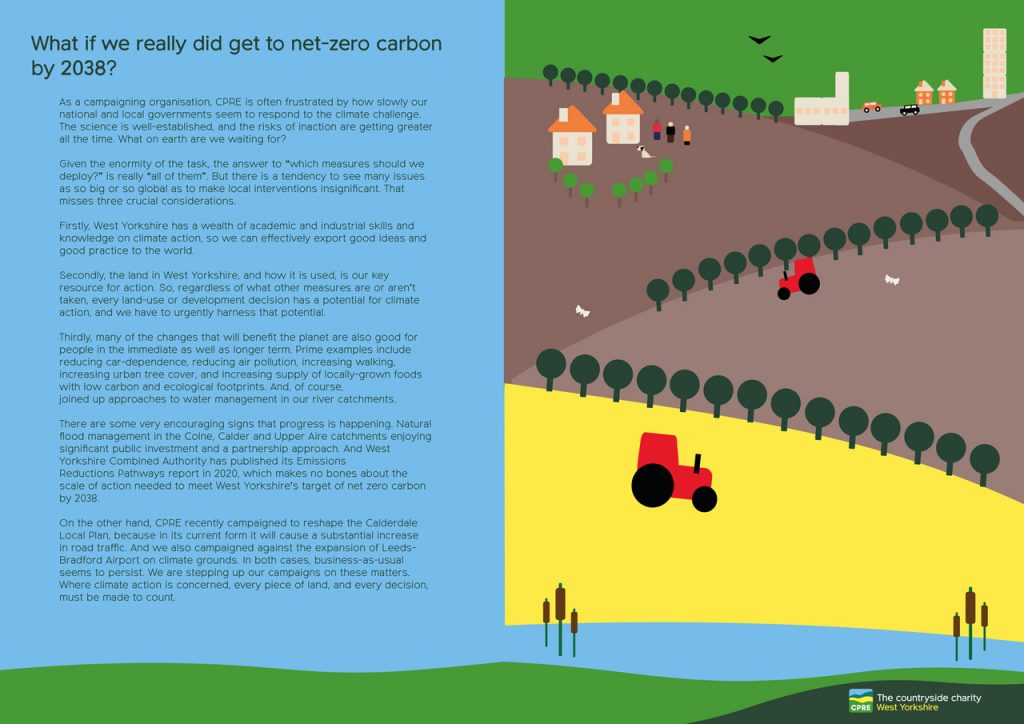
What if we really did get to net-zero carbon by 2038?
The changes that benefit the planet are also good for people. Reducing our dependency on cars, reducing air pollution, increasing urban tree cover, increasing our local food production and getting active with our travel. All of these things make a difference. West Yorkshire can harness it’s amazing potential of land, knowledge and experience to make inspiring change. This means that every piece of land, every decision, and every plan must be made to count.
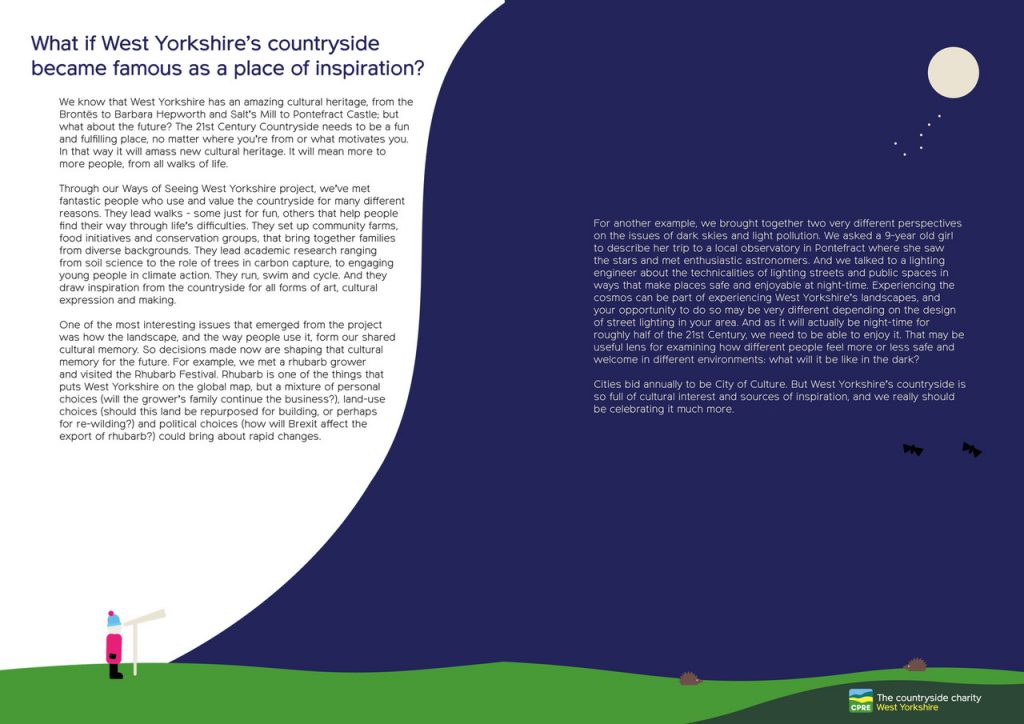
Q: What if West Yorkshire’s countryside became famous as a place of inspiration?
West Yorkshire has an amazing cultural heritage – from the Brontes to Barbara Hepworth and Salt’s Mill to Pontefract Castle. How will we ensure that West Yorkshire is a place that continues to inspire into the future? The way people use the countryside forms a shared cultural memory – and it is important that we nurture this, creating new opportunities and celebrating our cultural identity today.
Cities bid to be cities of culture, but the countryside of West Yorkshire is also full of memories, experience and future opportunities to continue our creation of a cultural countryside.
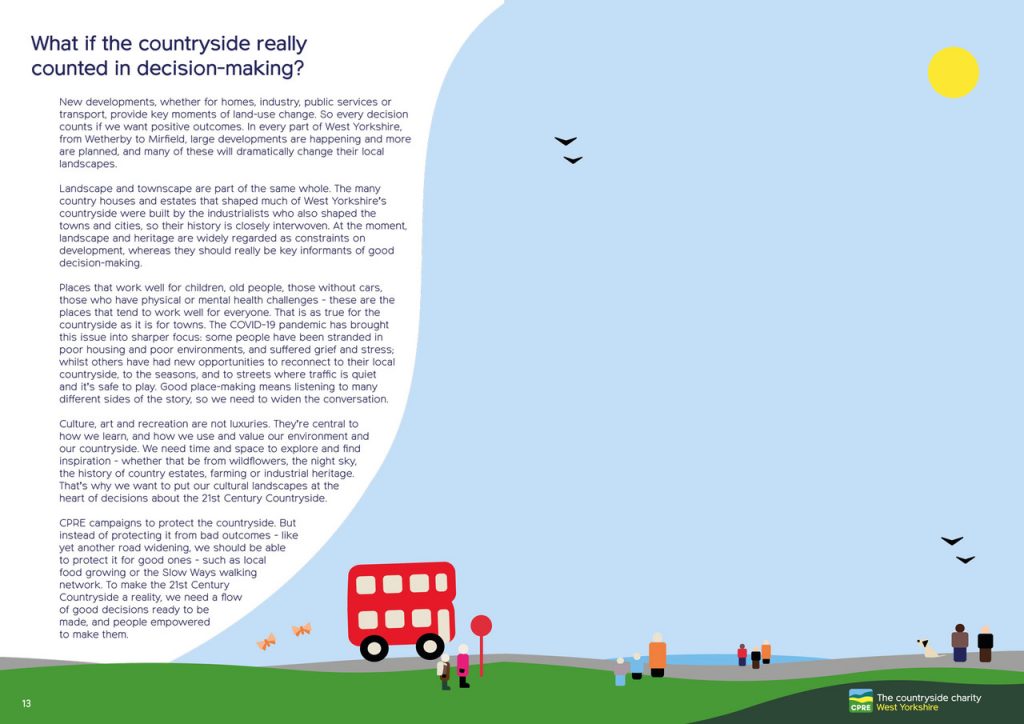
Q: What if the countryside really counted in decision-making?
New developments of any type provide key moments of land-use change, so every decision counts if we want positive outcomes.
CPRE campaigns to protect the countryside. Instead of protecting against bad outcomes, we should be able to protect it for good ones. To make the 21st Century Countryside a reality we need a flow of good decisions ready to be made, and people empowers to make them, and this positive change, happen.
The 21st Century Countryside - Brownie Edition!
CPRE West Yorkshire have been speaking to a range of people in the area to find out their vision for a 21st Century Countryside.
We asked some Brownies from Yorkshire what they thought it might be like - and here's what they said.
